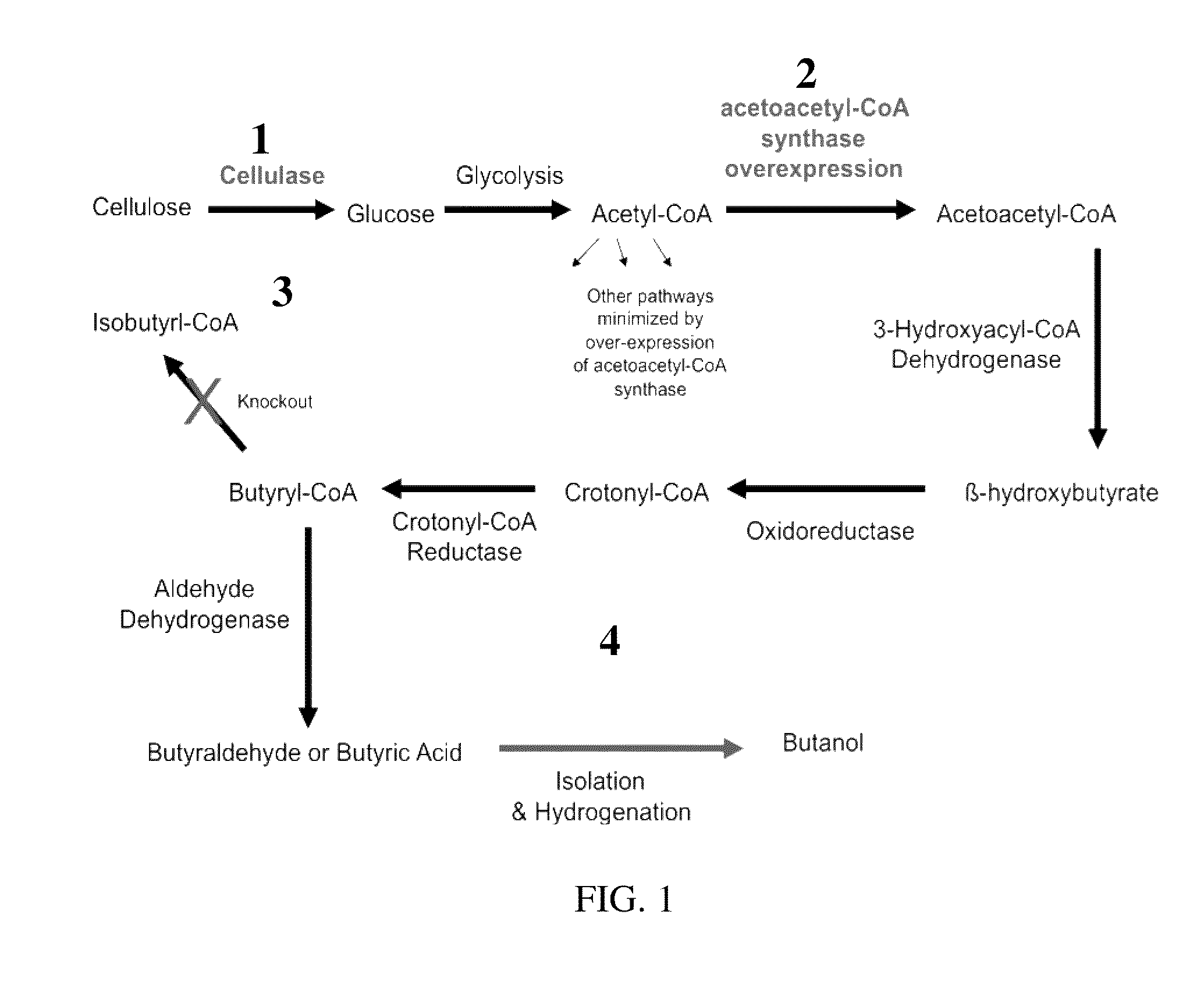Butanal Production Using Engineered Streptomyces Coelicolor
- Summary
- Abstract
- Description
- Claims
- Application Information
AI Technical Summary
Benefits of technology
Problems solved by technology
Method used
Image
Examples
Embodiment Construction
[0020]Referring now to the drawings, wherein like reference numerals refer to like parts throughout, there is seen in FIG. 1 a course of action according to the present invention with each of the four major stages numbered 1 through 4.
[0021]Stage 1. Optimizing Growth of S. Coelicolor Using Cellulose as Food Source.
[0022]Utilization of a cheap and readily available energy source is a primary goal and objective of any product production. A vast amount of time and energy is spent building or finding an organism capable of processing key raw materials. The present organism is a strain of Streptomyces coelicolor A3(2), which is a soil-dwelling organism that can produce antibiotics, access iron-citrate, and in general conduct a wide array of complex reactions. Of key interest here is the fact that S. coelicolor can digest chitin, lectin, and cellulose. This means that S. coelicolor can be grown in cheap, minimal media containing only basic salts supplemented in cellulose as the only carbo...
PUM
| Property | Measurement | Unit |
|---|---|---|
| Energy | aaaaa | aaaaa |
| Precipitation enthalpy | aaaaa | aaaaa |
Abstract
Description
Claims
Application Information
 Login to View More
Login to View More - R&D
- Intellectual Property
- Life Sciences
- Materials
- Tech Scout
- Unparalleled Data Quality
- Higher Quality Content
- 60% Fewer Hallucinations
Browse by: Latest US Patents, China's latest patents, Technical Efficacy Thesaurus, Application Domain, Technology Topic, Popular Technical Reports.
© 2025 PatSnap. All rights reserved.Legal|Privacy policy|Modern Slavery Act Transparency Statement|Sitemap|About US| Contact US: help@patsnap.com



